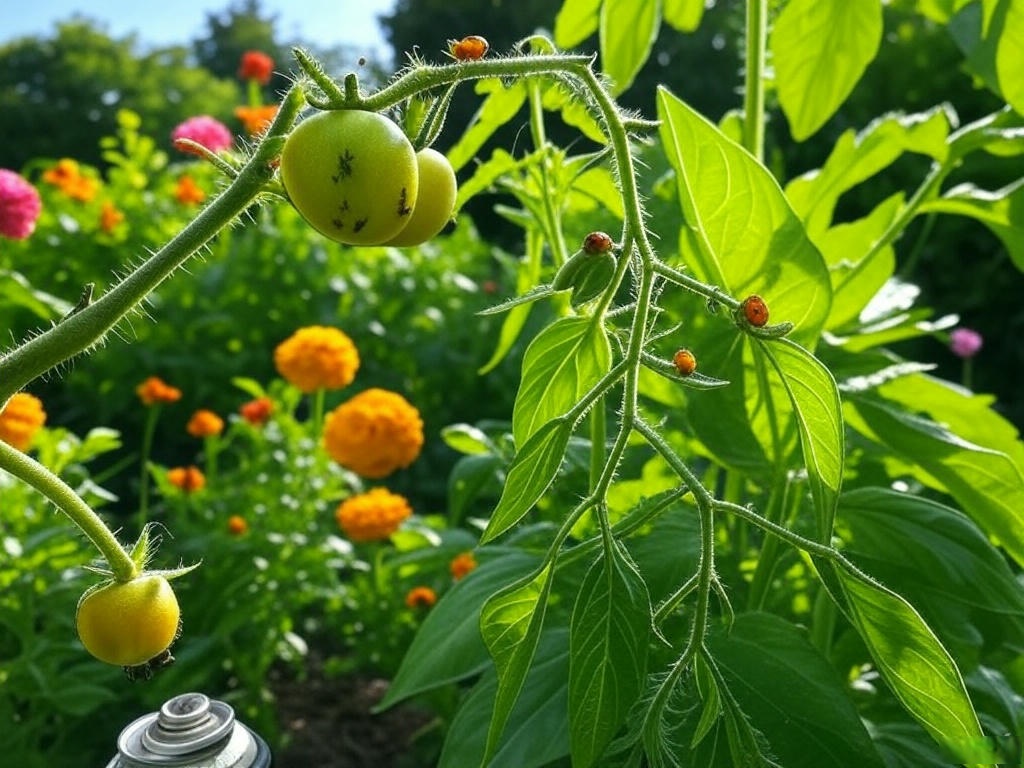Plant pests can cause damage to your garden, from eating leaves to spreading disease. While chemical pesticides are an option, they can harm beneficial insects and the environment. Thankfully, there are many natural ways to manage plant pests and keep your garden healthy without resorting to harsh chemicals. Here are some tips on how to deal with common plant pests naturally.
1. Know Your Pests
Before you start combating pests, it’s essential to identify them. Common plant pests include:
- Aphids: Small, soft-bodied insects that suck sap from plants, causing yellowing and curling of leaves.
- Spider Mites: Tiny arachnids that create webs on the undersides of leaves and cause stippling or discoloration.
- Whiteflies: Small, flying insects that feed on plant sap, leading to yellowing leaves and stunted growth.
- Slugs and Snails: These pests leave slimy trails and feed on tender leaves, causing holes and damage.
- Caterpillars: Larvae of butterflies and moths that chew through leaves and flowers.
2. Encourage Beneficial Insects
Many natural predators feed on plant pests. Attracting these beneficial insects to your garden is one of the best ways to keep pests under control.
- Ladybugs: These beetles are voracious aphid eaters. You can buy ladybugs from garden centers or plant flowers like dill, fennel, and yarrow to attract them.
- Lacewings: Lacewing larvae feed on aphids, whiteflies, and other pests. Planting a variety of flowering herbs like cilantro or dill can attract lacewings.
- Predatory Beetles: These beetles hunt down pests like slugs, aphids, and caterpillars. Planting cover crops like clover can encourage them to stay.
3. Neem Oil
Neem oil is a natural pesticide that comes from the neem tree. It works as an insect repellent and disrupts the feeding and reproductive systems of many pests. Neem oil is safe for most plants and does not harm beneficial insects like bees when applied correctly.
- How to Use: Mix 1-2 tablespoons of neem oil with water and a few drops of mild liquid soap. Spray the solution on the affected plants, focusing on the undersides of the leaves, where pests often hide. Apply in the early morning or late evening to avoid harming pollinators.
4. Diatomaceous Earth
Diatomaceous earth (DE) is a powdery substance made from fossilized algae. It works by dehydrating pests like slugs, snails, and aphids by scraping their exoskeletons. DE is safe for humans, pets, and beneficial insects, but it should be applied dry and reapplied after rain.
- How to Use: Lightly dust the surface of the soil or affected plants with diatomaceous earth. Be sure to wear a mask to avoid inhaling the fine powder.
5. Soap Spray
Insecticidal soap is a natural pesticide made from plant-based oils and fatty acids. It’s effective against aphids, whiteflies, and spider mites. The soap works by suffocating the pests without harming your plants.
- How to Use: You can buy insecticidal soap or make your own by mixing 2 tablespoons of mild liquid soap with 1 quart of water. Spray it directly on the pests, covering both the top and bottom of leaves. Reapply as needed, especially after rain.
6. Garlic and Chili Spray
Garlic and chili are natural deterrents for many pests. The strong smells of garlic and the heat from chili peppers repel insects and make your garden less appealing to them.
- How to Use: Blend 2-3 cloves of garlic with 1-2 hot chilies, a tablespoon of vegetable oil, and a cup of water. Strain the mixture and add a few drops of liquid soap. Spray this solution on your plants to deter pests. Be cautious with the chili mix—avoid getting it in your eyes or on your skin.
7. Companion Planting
Companion planting involves growing plants together that either repel pests or attract beneficial insects. For example:
- Marigolds: These flowers repel aphids, nematodes, and whiteflies. Planting them near your vegetables can help protect them from pests.
- Basil: Basil repels mosquitoes and flies, making it a great companion for tomatoes.
- Chives: Chives help repel aphids, Japanese beetles, and slugs, making them an excellent companion for roses and carrots.
8. Hand-Picking and Trapping
For some pests, the best solution is simply removing them by hand. You can pick off visible pests like caterpillars, beetles, or aphids and drop them into a bucket of soapy water. For pests like slugs, you can set up traps to catch them.
- Slug Traps: Place shallow dishes filled with beer or a mixture of sugar water and yeast around your plants. Slugs are attracted to the smell and will crawl in but won’t be able to get out.
9. Proper Watering and Plant Care
Healthy plants are less likely to be attacked by pests. Ensure your plants are properly watered and well-nourished to boost their resilience. Avoid overwatering, which can attract pests like aphids and spider mites. Additionally, clear any debris or dead plant material from your garden, as these can harbor pests.
10. Mulching
Mulch acts as a barrier, helping to prevent pests like slugs and snails from reaching your plants. It also helps to retain moisture and regulate soil temperature.
- How to Use: Apply a layer of organic mulch, such as straw, wood chips, or leaves, around your plants. Keep the mulch a few inches away from the plant stems to prevent rot.
Final Tip
Dealing with plant pests naturally is all about creating a balanced, healthy environment in your garden. By using beneficial insects, natural pesticides, and other eco-friendly methods, you can protect your plants without harming the environment. Consistency is key—check your garden regularly, apply natural remedies as needed, and your plants will thrive naturally.

Leave a Reply